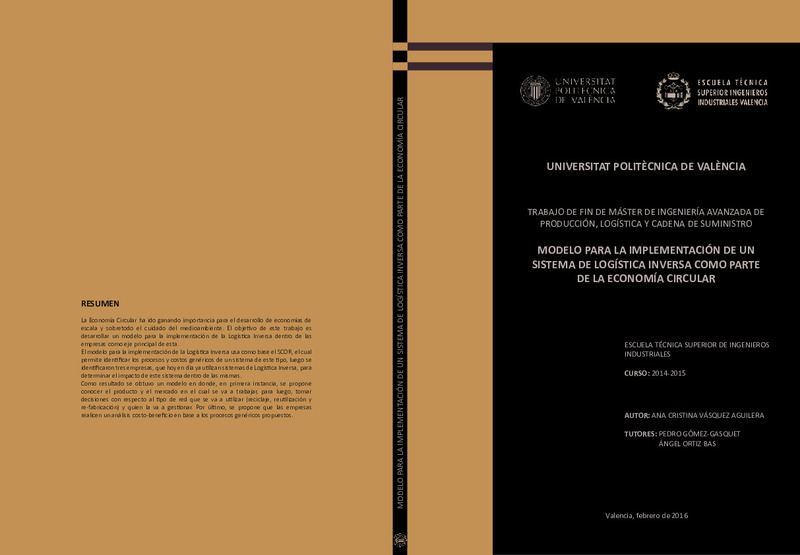JavaScript is disabled for your browser. Some features of this site may not work without it.
Buscar en RiuNet
Listar
Mi cuenta
Estadísticas
Ayuda RiuNet
Admin. UPV
Modelo para la implementación de un sistema de logística inversa como parte de la economía circular
Mostrar el registro completo del ítem
Vásquez Aguilera, AC. (2016). Modelo para la implementación de un sistema de logística inversa como parte de la economía circular. http://hdl.handle.net/10251/72345.
Por favor, use este identificador para citar o enlazar este ítem: http://hdl.handle.net/10251/72345
Ficheros en el ítem
Metadatos del ítem
| Título: | Modelo para la implementación de un sistema de logística inversa como parte de la economía circular | |||
| Autor: | Vásquez Aguilera, Ana Cristina | |||
| Director(es): | ||||
| Entidad UPV: |
|
|||
| Fecha acto/lectura: |
|
|||
| Resumen: |
[EN] Circular Economy has become increasingly important for the development of economies of scale and especially the environment care. The objective of this work is to develop a model for the implementation of Reverse ...[+]
[ES] La Economía Circular ha ido ganando importancia para el desarrollo de economías de escala y sobretodo el cuidado del medioambiente. El objetivo de este trabajo es desarrollar un modelo para la implementación de la ...[+]
|
|||
| Palabras clave: |
|
|||
| Derechos de uso: | Reserva de todos los derechos | |||
| Editorial: |
|
|||
| Titulación: |
|
|||
| Tipo: |
|
recommendations
Este ítem aparece en la(s) siguiente(s) colección(ones)
-
ETSII - Trabajos académicos [10404]
Escuela Técnica Superior de Ingenieros Industriales







